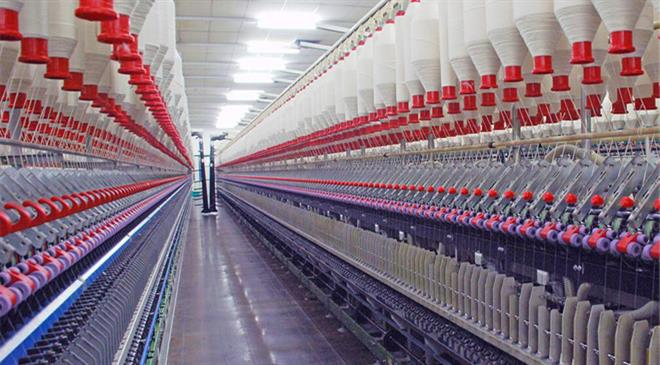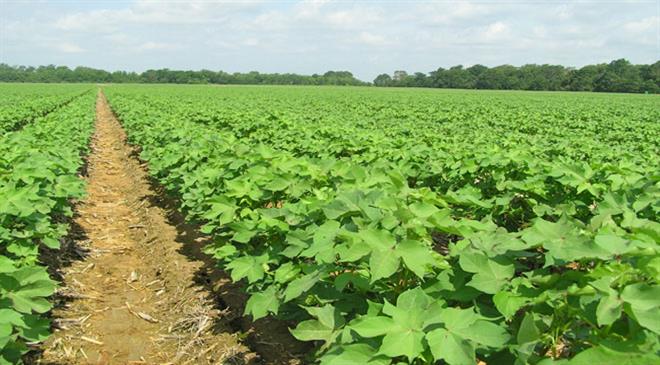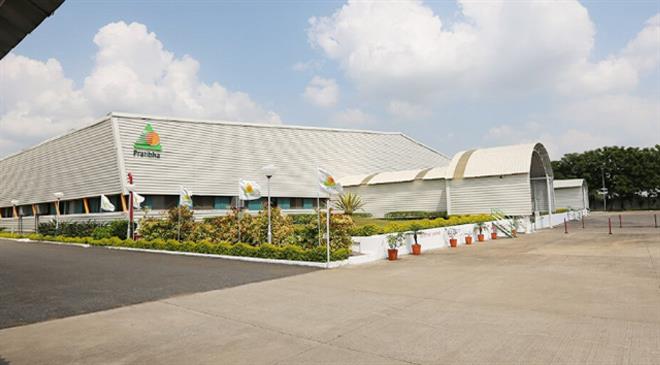It's crucial to keep knowledge in line with trends
Established in 1997, Pratibha Syntex is a leading manufacturer of garments. It produces over 60 million pieces of apparel annually including garments, innerwear, thermals and sleepwear for over 20 international leading brands. In an interview with Fibre2Fashion, VP (Sales, Strategy & Sustainability), Sameer Kumar Bhand provides a glimpse into the company's journey towards manufacturing responsible textiles.
What percentage of the world's cotton production is organic? What is the expected growth rate?
Much of the demand for organic cotton currently comes from manufacturers and brands with environmental and social responsibility goals. The world's total organic cotton production is less than 1 per cent of the global cotton production and everyone is striving to make it 2 per cent in the next five years. The willingness to move to organic cotton despite its environmental benefits is low due to lack of transparency, and no real benefits to the least prosperous actors in the supply chain, namely smallholder farmers. The overall cotton production is also expected to decline due to more lucrative alternatives to farmers such as soyabean or reduction in harvested area, especially in India which is the largest producer of cotton in the world.

What are your top five suggestions towards returning to traditional practices, blended with the latest knowhow and innovations.
It is crucial to keep the knowledge of the past in line with the trends of the future. One cannot move forward without learning from the past practices which were established with thorough understanding and continuous practice. The first thing that any textiles company should do is to focus on selection of materials. When companies focus on sourcing sustainable materials, half of the problem in the chain is solved. Reducing waste generation for landfills can help lessen burden on mother earth. This can be done by using sustainable materials, creating sustainable designs, and recycling processed waste and garments. Moving to zero use of hazardous chemicals in the dyeing and processing could be another step towards a more sustainable practice. Use of renewable sources of energy, such as solar and wind energy, would help reduce costs and lower the negative impact on the environment. Also, reducing energy consumption by choosing alternatives like LED lights and energy-efficient machinery. Responsible use of water, recycling and reducing its usage could help move to a better sustainable practice. Rainwater harvesting plants can also be set up to save water.

Sustainability has to be a way of life/manufacturing. How do you ensure it across your supply chain?
Pratibha aims to use 100 per cent sustainable raw materials in all processes. Through our farming initiative Vasudha, we ensure a constant supply of only BCI, Fairtrade and organic cotton, which was 30,000 tonnes last year. Hundred per cent of the polyester we procure is recycled polyester, and even if the buyer is unwilling to pay for the additional cost of recycled polyester, we bear the same. Allure, our spun-dyed man-made fabrics, helps us reduce water and energy usage by 80 and 50 per cent respectively. With the closed-loop technology, the final garment that is made can be completely decomposed in 90 days. All the raw materials from yarn to trims to dyes to printing are decomposable.
How many farmers do you work with in India, and in which regions?
There's a lot of change in management and training required for the farmers to successfully complete the shift from conventional to organic cotton. We try to make that shift easy by forming support groups, organising training sessions, providing a platform for buying inputs and selling outputs. Since 1997, about 35,000 farmers have been associated with us under our sustainable farming initiative, Vasudha in Madhya Pradesh and Rajasthan, of which 17,500 farmers grow organic cotton. These farmers grow 30,000 tonnes of organic and BCI cotton on 170,000 acres of land. We are aiming to quadruple farmer incomes by 2022 by not only promoting farming of organic cotton but also other organic crops.
What is the global market size for apparel?
It is a $2.5 trillion and an ever-growing industry. It is estimated that 150 million lives are touched by the global apparel industry in a year. The entire industry is seeing a shift towards more sustainably-produced garments. A lot of conscious brands are aggressively choosing sustainable materials over those that have a negative environmental impact. Major brands are setting targets for the future where they aim to move to sourcing of completely sustainable materials like organic cotton, BCI cotton, recycled polyester, spun-dyed viscose, etc, for their products. Such measures would help increase the share of sustainable garments in the market, though the process will take time.
What are your top HR policies?
We provide training to all employees before we take them on board to work in factories. It helps us in eliminating errors at the production stage. The employees are also trained over regular periods of time to recap and advance their knowledge and skills. A programme called WE (Women Empowerment) is an initiative that we have started to educate and train women, thus helping in enhancement of their skills. Annual sports events, festival celebrations, inter-departmental competitions are organised regularly seeing a high number of participation at all levels. With Fairtrade, we have opened a school in a village in Madhya Pradesh to provide education to all the children there. We also distribute gifts annually to our workers in association with Fairtrade. We have provided them with cookware sets, water purifiers, mixer-grinders over the years.
What are the challenges that Indian garment manufacturers face when it comes to adopting sustainable processes and manufacturing products sustainably?
The early stages of adoption of sustainable processes come with high costs. As an industry that is highly price competitive, it is difficult to picture the long-term benefits of these practices. After the first switch, it is really easy to realise the benefits of moving to sustainable practices for everything. The first step is the hard part. The garment manufacturers need to realise that these initial costs will reap higher benefits over time. Another challenge is finding buyers who are willing to pay for a product that is better in terms of the impact it creates on the planet and people. But if the manufacturers pursue their buyers to move to sustainable practices, the entire supply chain can be improved. Sustainable practices in itself is a new industry. The identification of best and genuine practices to adapt is a major challenge.

Which are your major markets for kidswear, menswear, and womenswear?
Europe and US are leading the charts of our major markets for kidswear, menswear and womenswear.
What are your core competencies?
Our vertically integrated supply chain is our biggest competency. It provides us with immense control over our sourcing by ensuring transparency in the supply of authentic organic cotton products. The agility that it provides us helps us stay one step ahead in all respects. With 'Speed to Market' we have reduced our delivery lead time by 30 per cent. It has helped our customers increase their profit margins and lower the amount of inventory that they hold. We engage in fibre production, spinning, knitting, and apparel manufacturing activities in India. This provides us with a lot of scope for research around all areas of the product lifecycle and new product development. Our farming initiative Vasudha, with 35,000 farmers over 170,000 acres of land has been instrumental in establishing us as India's first organic cotton, vertically integrated textiles company. This helps us in establishing a chain for easy traceability and in turn provides transparency. This chain of traceability is highly crucial to ensure authentic supply.

How has the revenue been in the last two fiscals and what is the target set for 2020?
Our sales revenue in the last two financial years was $125 million and $135 million respectively. We aim to earn $200 million by 2020.
What are the future plans at Pratibha?
Pratibha has set certain goals for the year 2020, and everyone at the company is striving towards achieving those, directly or indirectly. There are certain environmental goals that the organisation has set for itself. These help us achieve our business goal of sales revenue of $200 million by 2020. Pratibha's aim is to move to 100 per cent usage of sustainable raw materials for all buyers. Our goals on sustainability aim at 50 per cent reduction in freshwater usage, 30 per cent reduction in energy and GHG emissions, 40 per cent reduction in waste generated by 2020. We are also establishing a market wherein the farmers associated with us, through Vasudha, can sell their other organic crops. This will in turn support our aim to quadruple their income by 2022. Moreover, with our initiative EHSAS we plan to focus on future initiatives on environmental impact. This will influence our practices, create health and safety benefits for our employees, and social development opportunities that we create for everyone associated with us.(HO)
Which major brands and retailers do you supply to? Which new markets do you plan to explore?
We believe in establishing a relationship with brands based on our aligned sustainability goals. Thus, all the brands that we supply to have sustainability goals that are common to us. These shared goals help us establish a long-term association with buyers. We supply to major sportswear and fashion brands around the globe. Our new focus is on Japan. We are looking for associations that help us in driving our aim to be the global leader in sustainable textiles products and practices.
Which are the top sustainable practices followed at Pratibha?
Pratibha's aim is to move to 100 per cent sustainable products and processes, and for this we continuously strive to improve all the practices that are followed here. We have a recycling alternative called Loop that runs on the concept of circular economy by minimising process waste and reducing and reusing the materials and water. Under our zero liquid discharge initiative, we also recycle 100 per cent of the water that we use. We end up using 93 per cent of the recycled water. We use spundyed man-made fibres to ensure minimum use of water, chemicals and energy in the process.
How big is the design team at Pratibha? How do they keep up with international trends?
We have two design teams: one in Pithampur, Indore; and a design studio in Delhi, for design assistance to brands. A lot of visits are organised for our designers to help them keep up with the latest international trends. Participation in events and fairs at both national and international levels also provide a lot of exposure.
Should waste management be an important part of the new textiles policy?
Wastage is an unavoidable part of the entire lifecycle of a garment. Every year 21 billion tonnes of garments and fabrics end up in landfills. Starting from the fibre stage to the final product (the garment) stage, there is wastage of short fibres and residues, fabric cuttings, rejected yarns, fabrics and garments. This results into about 84 per cent waste in the process from seed to garment. The water used for dyeing fabrics, packaging materials, trims, etc-every process has a residue or a by-product or a wastage of some kind. All these products have the potential to be either recycled or reused. The cotton fibre and fabric waste can be recycled to make paper and stationery products, recycled clothing and artifacts. Our spinning unit is also a zero-waste unit. We have also taken the first step towards a circular economy and a zero-waste cycle in the garment manufacturing process, of which, the product, by-products and residues, all are bio-degradable.





